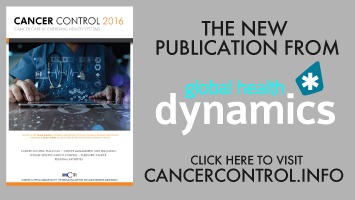Leighann E Kimble, Healthcare Improvement Fellow, quality & performance institute, University Research Co., LLC, USAID applying science to strengthen and improve systems (ASSIST) Project; Dr M Rashad Massoud, Chief Medical and Quality Officer/Senior Vice President, quality & performance institute, university research co., LLC, Director USAID Applying Science to Strengthen and Improve Systems (ASSIST) Project and Dr James Heiby, Medical Officer, US Agency for International Development, Bureau for Global Health, Office of Health Systems
This article discusses the importance of quality improvement to address hospital-acquired infections and antimicrobial resistance (AMR). By focusing on improving the quality of care through increased adherence to guidelines and evidence-based best practices, quality improvement plays a role increasing the prevention and surveillance of infection outbreaks, while increasing ability of healthcare systems to respond to and build resilience to outbreaks through changes in their care delivery processes.
In weak health systems, the risk for hospital-acquired infections (HAI) and consequently developing antimicrobial resistance (AMR) is especially high. Addressing hospital-acquired infections and AMR requires healthcare processes that include not only infection prevention, surveillance and response, but ensure quality in care delivery. By ensuring compliance with evidence-based best practices in care delivery processes, quality improvement acts as a prevention mechanism against HAI outbreaks and AMR stemming from poor-quality care. AMR must therefore be addressed not only as a public health concern, but as an issue of quality of care delivery.
Quality improvement addresses this issue by placing quality at the centre of care delivery, focusing on how care delivery processes can be reorganized to ensure that every patient gets the care they need, every time they need it (1, 2). As displayed in Figure 1, healthcare must be understood in terms of a system consisting of inputs, processes, and outcomes. The inputs into a system involve all the resources, including people, materials, etc., that are used in system processes. The processes in systems are the series or sequences that produce outcomes. In other words, processes are “what” is done and “how” it is done for a system to achieve the outputs and outcomes it achieves. Finally, the outcomes are what is yielded by the inputs and processes within a system. By understanding the inputs and processes that go into a healthcare system, quality improvement can identify what processes must be changed to produce better outputs and outcomes.
The existence of HAIs and AMR in a health system are signs of healthcare processes that are not functioning in a way that is compliant with evidence-based best practices. By understanding healthcare as a system, improvement provides a means for health systems to properly address the processes leading to HAIs and AMR through: 1) prevention of infection outbreaks through quality healthcare delivery; 2) surveillance and monitoring of infection outbreaks; and 3) continuous improvement to properly respond to outbreaks and build resilience in the health system.
Prevention
Infection control guidelines and practices have been in existence for many years. These guidelines and practices are
aimed at standardizing healthcare delivery to ensure that microbes are not transmitted through the healthcare delivery processes. Adherence to guidelines in practice is of paramount importance in preventing HAIs and AMR. It is equally important to continuously monitor the implementation of guidelines and best practices as well as the outcomes of their implementation through surveillance to find out where guideline adherence for best practices are failing.
Quality improvement methods allow us to review care delivery processes in a way that monitors adherence to best practices and guidelines, as well as understand where issues exist in the processes that prevent the proper implementation of the guidelines. In quality improvement, after identifying areas of failure in care delivery, changes are introduced to the processes of the health system. These changes aim to reorganize care delivery processes in a way that increases adherence to and use of evidence-based best practices and guidelines (2, 3). The goal in changing healthcare processes is to yield improved outputs and outcomes of the health system. By improving adherence to best practices and guidelines in care delivery processes, HAIs and AMR due of poor quality care is prevented, thereby improving the outcomes of the health system.
Surveillance and monitoring
Recognizing that HAIs and AMR can occur even in instances where high quality of care is being provided, quality improvement goes beyond healthcare delivery processes and emphasizes the importance of establishing and continuously improving standards for prevention of transmission of infections, including surveillance. Having surveillance systems is essential, but not all health systems have established systems in place. Surveillance systems allow providers to monitor outbreaks of HAIs and AMR. By establishing and/or improving in surveillance systems, quality improvement provides healthcare systems with the necessary tool to monitor infection outbreaks.
Response and resilience through continuous improvement
Because healthcare delivery processes are inherently imperfect, monitoring and continuous improvement is needed. Beyond establishing surveillance systems, quality improvement methods provide the means by which providers can review and respond appropriately to information from their surveillance systems. Reviewing and responding to surveillance systems information is necessary to control and respond to infection outbreaks (4), as well as bringing awareness to providers of any existing issues in their healthcare delivery processes that contribute to the prevalence of HAIs and AMR. Using improvement methods, providers are able not only to respond to outbreaks of HAIs and AMR, but can build resilience to infection outbreaks by continuously improving the quality and safety of care delivery processes to reduce and prevent their occurrence.
Quality improvement in practice: The USAID ASSIST Project
The USAID Applying Science to Strengthen and Improve Systems (ASSIST) Project has utilized quality improvement methods to help build strong, resilient health systems globally. The USAID ASSIST Project has worked in Uganda and Palestine to address HAIs and AMR using improvement. While the contexts between these two activities are vast, the principles of using quality improvement methods remains the same.
In Palestine, the USAID ASSIST Project is reducing HAIs that have resulted in alarming rates of AMR by using quality improvement to increase evidence-based best practices in care delivery processes as well as supporting the country’s antibiotic stewardship efforts. Similarly, in Uganda, the project has focused on improving evidence-based practices in the prescription of antibiotics for children. In both activities, access to, knowledge and delivery of evidence-based practices was assessed using quality improvement methods, with changes introduced to care delivery processes to improve the quality of care received by patients. These two examples will be detailed in other articles within this publication.
Conclusion
As a global health concern, addressing HAIs and consequent AMR requires not only response to outbreaks, but prevention, surveillance, and resilience in health systems. At the centre, HAIs and AMR are due to lack of adherence to guidelines and evidence-based best practices. Unfortunately, the application of quality improvement to address HAIs and AMR has been limited. Through surveillance and continuous improvement, quality improvement methods allow us to identify and monitor failures in healthcare delivery processes that result in outbreaks of HAIs and AMR.
In responding to these failures, quality improvement provides a simple methodology that focuses on reorganizing processes in a way that ensures evidence-based guidelines and best practices are followed in the care delivered to patients. Established and practised standards and surveillance systems, when paired with quality improvement, increases health system resilience to infection outbreaks through their ability to monitor and manage outbreaks of infections, while increasing the quality of care delivery and antibiotic stewardship processes that prevent HAIs and AMR.
References
1. Wall R, Ely E, Elasy T, Dittus R, Foss J, Wilkerson K, et al. Using real time process measurements to reduce catheter related bloodstream infections in the intensive care unit. Quality & safety in health care. 2005;14(4):295-302. [https://www.ncbi.nlm.nih.gov/pmc/articles/PMC1744064/].
2. Langley GJ et al. The Improvement Guide. Second Edition (2009), San Francisco, CA: Jossey-Bass, pp. 76-79, 186-187.
3. Massoud R, Askov K, Reinke J, Franco LM, Bornstein T, Knebel E, et al. 2001. A Modern Paradigm for Improving Healthcare Quality. Published for the U.S. Agency for International Development (USAID) by the Quality Assurance Project.
4. Massoud MR, Barry D, Vaid S, Kuhlase NM and Haumba SM. The role of improvement science in infection control. AMR Control 2015: 80-86.




